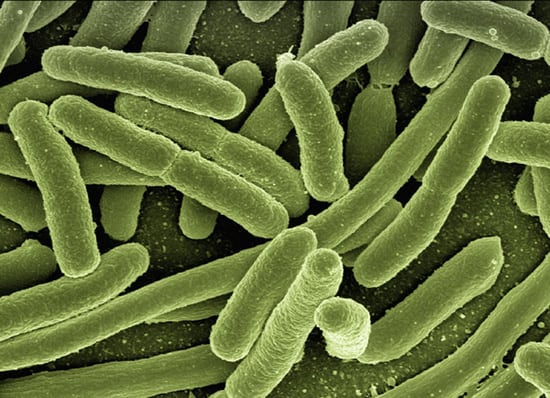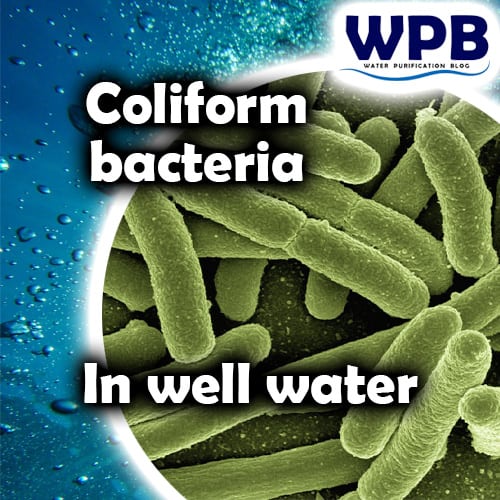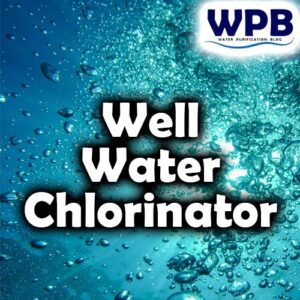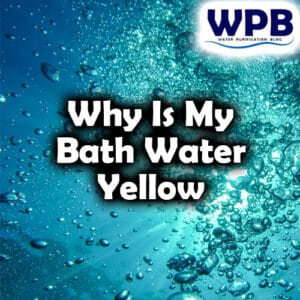If you have a private well water at home, it is essential to monitor it regularly for coliform bacteria, especially if you use it as drinking water. Therefore, it is essential to treat total coliforms in well water.
Table of Contents
What are Coliform bacteria?
Coliform is a type of bacteria that is found in the intestines of humans and warm blooded animals. While total coliform bacteria are not usually harmful, their presence in well water can indicate that other more harmful bacteria are present as well.
Coliforms are a type of microorganism that occur naturally in the environment, including soil and surface water.
These bacteria can also be found on the skin of humans and animals. While many types of coliforms are harmless, certain kinds of these bacteria like fecal coliform bacteria can cause serious illness, disease, and other health concerns particularly when they are present in high numbers.

What does it mean if coliform is present in well water?
Coliform bacteria serve as an important indicator of water quality and are commonly used to test for the presence of fecal contamination in water supplies.
The presence of coliform bacteria in water indicates that there may be harmful pathogens present, which can cause illness in humans and animals. Their presence can show that there are multiple water quality problems present in water.
These bacteria are Gram-negative non-spore-forming bacilli that possess β-galactosidase, which allows them to produce acids and gases under their optimal growth temperature of 35-37°C. Coliform bacteria can be aerobes or facultative aerobes.
The problems of Coliform bacterial contamination
While most coliform bacteria are not always harmful, they can be an indication of unsanitary conditions in food, milk, and water. It is essential to keep track of the presence of coliform bacteria, particularly in drinking water, to avoid serious health consequences.
It is important to note that the presence of coliform bacteria in well water can be particularly concerning, as well water is not typically treated with chlorine or other disinfectants to kill these bacteria. If you have coliform bacteria in your well water, it is crucial to take steps to address the contamination.
To prevent the presence of coliform bacteria in well water, you should ensure that the well is constructed correctly and that it is not located near sources of fecal contamination, such as septic tanks, human or animal waste. Regular testing for coliform bacteria is also recommended, particularly after heavy rain or flooding, which can increase the risk of contamination.
In summary, coliform bacteria are a type of microorganism that occur naturally in the environment, including soil and surface water. While not all types of coliform bacteria are harmful, certain strains can cause illness and disease. It is crucial to monitor the presence of coliform bacteria in water and take steps to prevent contamination if necessary.
What does it mean if coliform is present in well water?
Fecal coliform bacterial contamination
Fecal coliform bacteria are a subset of coliform bacteria that are commonly used as indicators of fecal and animal waste contamination in water and food sources. Fecal coliform bacteria are generally found in the intestinal tracts of warm-blooded animals and are thus an indication of recent human or animal waste fecal contamination.
They are facultatively anaerobic, rod-shaped, gram-negative, non-sporulating bacteria that require specific testing to differentiate them from other coliform bacteria.
While fecal coliform bacteria are more specific to fecal contamination than other coliform bacteria, they can still originate from sources other than fecal matter. For example, some species of Klebsiella, which are associated with textile and pulp and paper mill wastes, are included in the fecal coliform group. Therefore, it is important to use specific tests to differentiate fecal coliform bacteria from other coliform bacteria and to determine the source of fecal contamination in water and food sources.
How do I get rid of coliform in my well water?
Shock chlorination of the Well with Chlorine
Shock chlorination of the well or your water supply with chlorine is one of the most effective methods to treat the coliform bacterial contamination of well water.
When constructing a new well, a licensed well driller will do shock chlorination to disinfect the well and kill all bacteria.
If you already have contamination in your existing well, you can also disinfect the well with shock chlorination.
Adding chlorine to a well for disinfection is called shocking the well. The process involves adding a high concentration of chlorine to the well and letting it sit for at least 24 hours.
After 24 hours that the shock chlorination is carried out, the water should be flushed out of the system, and new water sample should be collected for testing. If the water sample show no signs of total coliform bacteria, your well water is safe to drink.
Municipal water supply disinfection can be done by adding chlorine or chlorine dioxide with a dosing pump.
Installing UV Purification System
UV purification is another effective method to treat total coliforms in well water. This type of water treatment is capable of targeting bacteria like coliforms and escherichia coli (e coli), but also protozoa and viruses, making drinking water safe from bacterial contamination.
A UV system is typically installed at the water’s point of entry into your home. The system works by exposing the water to UV light, which will effectively kill bacteria and other harmful microorganisms present in the water.
However, it is essential to ensure that the UV purification system is working correctly by monitoring the system’s performance and replacing the UV bulb as needed.
Boiling the Water
Boiling the water is another simple and effective method to treat total coliform bacteria in well water. Boiling water for at least one minute will kill all bacteria present in the water, including total coliform.
However, this method is not practical for treating larger quantities of water.
Other Treatment Methods
Other treatment methods for total coliforms in well water include using chlorine dioxide, ozone, and hydrogen peroxide. However, these methods require specialized equipment and expertise and may not be suitable for everyone.
What is the acceptable level of coliform bacteria per 100 ml of water?
The question of what is the normal range of coliform in water is an important one, as it can help ensure the safety of drinking water.
The United States Environmental Protection Agency (EPA) has set both a health goal and legal limits for the presence of total coliforms in drinking water. According to the EPA, the maximum contaminant level goal (MCLG) for total coliforms in drinking water is zero, as there have been waterborne disease outbreaks in which researchers found very low levels of coliforms.
This means that any level of coliforms in drinking water may pose a health risk.
While coliforms are not harmful themselves, their presence in drinking water can indicate the potential presence of other harmful pathogens.
Therefore, it is important to monitor the levels of coliforms in drinking water and take appropriate actions if levels exceed the legal limit set by the EPA.
Coliform in well water symptoms
If coliforms are present in well water, it can cause a range of symptoms in humans.
These symptoms can include gastrointestinal issues, such as diarrhea, abdominal cramps, and nausea. Additionally, fever, vomiting, headaches, and fatigue may also occur.
It’s important to note that not all coliforms in well water are harmful to humans. The majority of these bacteria don’t pose any health risks, and they don’t have any taste or odor, so it may be difficult to know if they are present in your water.
However, if disease-causing coliform bacteria do make their way into your drinking water, it’s important to address the issue as soon as possible to avoid potential health problems.
If you suspect that your well water may be contaminated with coliforms, it’s important to have it tested by a qualified professional.
This will help to determine whether the bacteria are present and, if so, what type of treatment is needed to address the issue. There are several treatment options available, including disinfection methods, ultra filtration systems, and some other types of water treatment methods.
Conclusion
In conclusion, treating total coliforms in well or drinking water is essential to ensure that your water is safe.
Shocking the well with chlorine, installing a UV purification system, boiling the water, and using other specialized treatment methods are effective ways to treat total coliforms in well water.
However, it is essential to ensure that the treatment method you choose is suitable for your specific situation and that you follow the manufacturer’s instructions carefully. By doing so, you can ensure that your well water is safe to drink and free of harmful bacteria and microorganisms.

Who am I?
I am working as a water treatment technical manager and I have more than 25 years of practical experience in water purification.
Water purification expert
After many years of experience in water purification, I want to share some of my knowledge and get people to know the real importance of water quality.
Water purification and water treatment are very complex themes, so it is important to explain them in an easy-to-read way.
On this blog, you will find many understandable, easy-to-read information about water purification.
I hope you enjoy it, find some useful information, and thank You for reading.
More info on my work and my expertise on water purification can be found on my LinkedIn profile.






